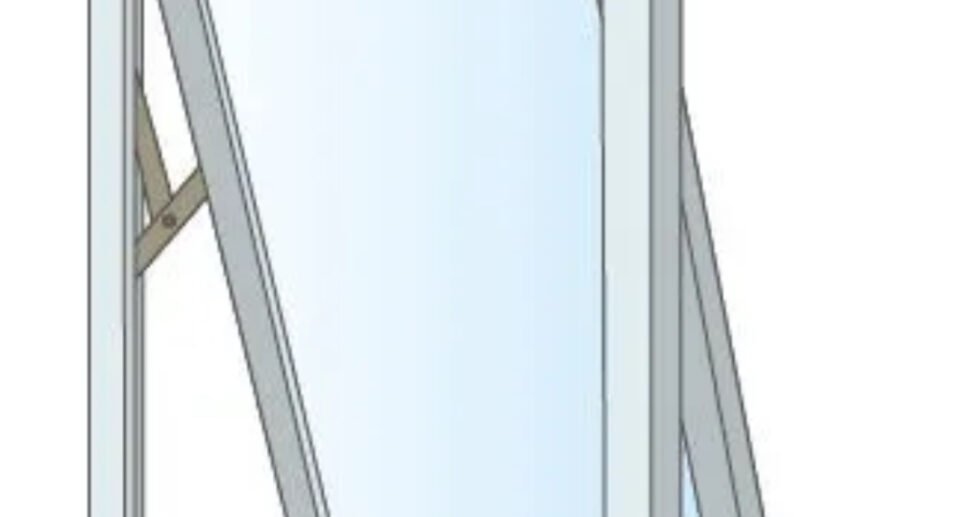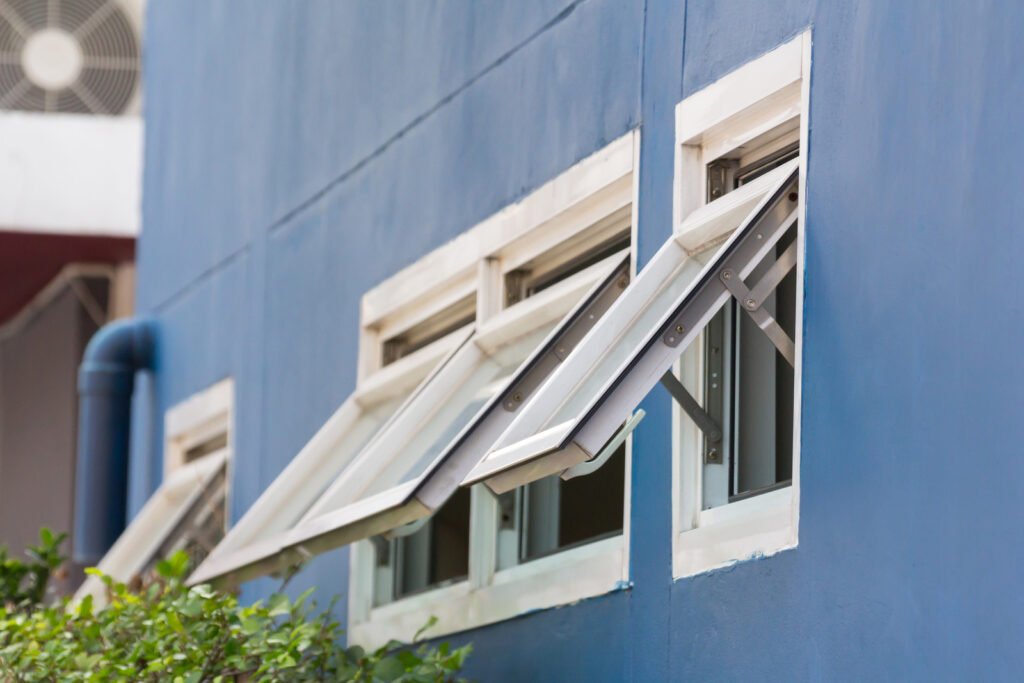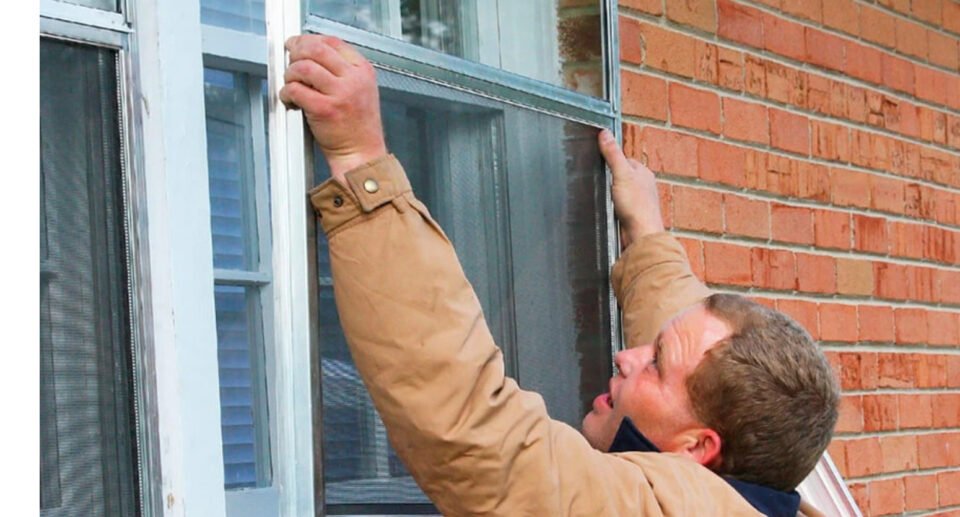Disadvantages of Awning Windows: What You Need to Know

Table of Contents
ToggleAwning windows are a popular window style that is hinged at the top and opens outward from the bottom, much like an awning. While awning windows come with several advantages, it is important to weigh the disadvantages as well.
This article will explore some of the disadvantages of awning windows and provide key takeaways to help you make an informed decision.
One of the major disadvantages of awning windows is limited ventilation and airflow.
Awning windows open outwards, which limits the area for air to circulate, resulting in less ventilation compared to other window types.
This can be a significant disadvantage, especially in areas where good ventilation is essential for maintaining indoor air quality.
Another challenge with awning windows is cleaning and maintenance.
Cleaning these windows can be challenging because the outside part is hard to reach, especially for windows installed high up.
This can make it difficult to keep the windows clean, which can impact the overall aesthetic of your home.
Additionally, the hinges and moving parts of awning windows can accumulate dirt and debris over time, which can affect their functionality.
Key Takeaways
- Awning windows have limited ventilation and airflow.
- Cleaning and maintaining awning windows can be difficult.
- Awning windows may not be suitable for all homes due to placement restrictions and safety concerns.
Limited Ventilation and Airflow

Impedes Fresh Air Circulation
One of the major disadvantages of awning windows is that they can impede the circulation of fresh air.
While they do provide ventilation, the opening size of awning windows is limited compared to other styles, such as casement windows, sliding windows, and hung windows.
This limitation can impact the amount of airflow and natural light that can enter the room.
Furthermore, when awning windows are open, the inward protrusion of the sash may partially obstruct the view, especially if they are located at eye level.
This obstruction can further impede the circulation of fresh air, as it can make it harder for air to flow in and out of the room.
Comparatively Lower Ventilation Than Other Styles
Compared to other styles, such as casement windows, sliding windows, and hung windows, awning windows provide comparatively lower ventilation.
While they do promote better airflow, improving the ventilation in your room and making it fresher, the design of these windows can limit the amount of air that can enter the room.
This limitation can be particularly problematic during the hot summer months, when fresh air circulation is essential for maintaining a comfortable indoor temperature.
Therefore, if you live in a hot and humid climate, it may be wise to consider other window styles that provide better ventilation and airflow.
Challenges in Cleaning and Maintenance
Awning windows provide excellent ventilation and natural light into homes. However, they also come with their own set of challenges in terms of cleaning and maintenance.
This section highlights some of the difficulties homeowners may encounter when cleaning and maintaining their awning windows.
Awning Windows: Difficulty in Exterior Cleaning
One of the most significant challenges with awning windows is cleaning the exterior.
Since they open outward, it can be difficult to reach the outer glass surface from the inside.
This challenge is even more pronounced for homeowners with multi-story homes.
Therefore, regular cleaning and maintenance are necessary to ensure smooth operation and prevent the build-up of dirt.
To clean the exterior of awning windows, homeowners may need to hire professional cleaning services or use specific tools such as a ladder or a pressure washer.
Cleaning the exterior of awning windows can be time-consuming and costly, especially for homeowners with many windows.
Wear and Tear from Frequent Use
Another challenge with awning windows is the wear and tear that comes with frequent use.
The mechanical parts of awning windows, such as the hinges and cranks, may wear down over time, leading to difficulty in opening and closing the windows.
Regular maintenance is necessary to ensure the smooth operation of awning windows.
Homeowners should lubricate the moving parts of the window, such as the hinges and cranks, to prevent them from sticking.
Additionally, homeowners should inspect their awning windows regularly to identify any signs of wear and tear and address them promptly.
Restricted Placement in Homes
Awning windows, while offering several benefits, are not always suitable for every home. One major disadvantage of these windows is their restricted placement.
They are typically not recommended for high-traffic areas, such as hallways or walkways, as they can protrude outward and create an obstruction.
Incompatibility with High-Traffic Areas
Awning windows are not ideal for high-traffic areas because of their outward opening mechanism.
This can pose a safety hazard, especially in hallways or walkways where people are constantly moving.
In addition, the protruding window can easily get bumped or damaged, which can be costly to repair.
Limitations in Certain Room Types
Another limitation of awning windows is that they may not be suitable for all room types.
For example, they may not be the best choice for kitchens or bathrooms, where ventilation is crucial.
Awning windows have a limited opening area, which can restrict the flow of air.
In addition, they may not fit well in basements or other rooms with smaller windows, as they require a certain amount of space to open outward.
Safety and Security Concerns
Potential Security Weakness
While awning windows are known for their excellent ventilation and energy efficiency, they do come with some security concerns.
Because they open outward, they can be more vulnerable to break-ins than other types of windows.
Intruders can easily remove the screens or pry the windows open from the outside.
To mitigate this risk, homeowners can install additional security measures such as locks, bars, or grilles.
However, these additions can also obstruct the view and reduce the amount of natural light that enters the room.
Emergency Exit Obstructions
Another safety concern with awning windows is that they can obstruct emergency exits in case of a fire or other emergency.
If the windows are the only means of escape, they need to be easily operable from the inside and should not be obstructed by furniture or other objects.
Impact on Energy Efficiency
Insulation and Energy Loss Issues
While awning windows can provide ventilation and natural light, they are not the most energy-efficient window type.
One of the main disadvantages of awning windows is their insulation and energy loss issues.
Awning windows are typically made of a single pane of glass, which is not as effective at insulating a home as double or triple-pane windows.
This means that awning windows can allow heat to escape during the winter and cool air to escape during the summer, leading to higher energy bills.
Another issue with awning windows is that they can be difficult to seal properly.
If the window is not sealed tightly, it can allow drafts to enter the home, leading to further energy loss.
This is especially problematic in areas with extreme temperatures, where the heating and cooling systems may need to work harder to maintain a comfortable temperature.
Comparison with More Energy-Efficient Windows
When compared to more energy-efficient window types, such as double or triple-pane windows, awning windows fall short.
Double or triple-pane windows offer better insulation and can help reduce energy loss, which can result in lower energy bills.
Additionally, some energy-efficient windows are coated with a low-emissivity (low-e) coating, which can help reflect heat back into the home during the winter and block it during the summer.
Design and Aesthetic Limitations
Awning windows are a popular choice for homeowners due to their functionality and energy efficiency. However, they do come with some design and aesthetic limitations that may not suit everyone’s preferences.
In this section, we will explore some of the drawbacks of awning windows in terms of style and aesthetics.
Limited Style Versatility
One of the main drawbacks of awning windows is their limited style versatility.
While they come in a variety of materials, shapes, and sizes, their hinged design limits their compatibility with certain architectural styles.
For example, they may not be suitable for traditional or historic homes that require more ornate or decorative window designs.
Additionally, their modern and minimalist look may not suit some homeowners who prefer a more traditional or classic aesthetic.
Constrained Views and Natural Light
Another disadvantage of awning windows is their constrained views and natural light.
When awning windows are open, the inward protrusion of the sash may partially obstruct the view, especially if they are located at eye level.
This can be a significant drawback for those who want an unobstructed view of the outdoors.
Additionally, the inward protrusion of the sash may limit the amount of natural light that enters the room, which can make the space feel darker and less welcoming.
Operational Difficulties
Awning windows are known for their ease of operation, but they are not without their drawbacks. In this section, we will discuss some of the operational difficulties that users may encounter with awning windows.
Problems with Mechanism Over Time
One of the primary operational difficulties with awning windows is that the mechanism can wear down over time.
The hinge that allows the window to open and close can become loose or damaged, making it difficult to operate the window smoothly.
This can be especially problematic if the window is frequently opened and closed, as the wear and tear on the mechanism will be greater.
In addition, the crank that is used to open and close the window can also become worn or damaged.
If the crank is not functioning properly, it can be difficult to open or close the window, and it may require more force than usual to operate the window.
This can be especially problematic for individuals with limited mobility or strength.
Inconvenience in Operation
Another operational difficulty with awning windows is that they can be inconvenient to operate in certain situations.
For example, if the window is located in an area that is difficult to reach, such as high up on a wall, it may be challenging to open or close the window.
This can make it difficult to adjust the ventilation in the room, which can be frustrating for users.
In addition, the crank that is used to open and close the window can be awkward to use in some situations.
For example, if the user is trying to open the window while holding something in their other hand, it can be challenging to turn the crank.
This can be especially problematic if the user is trying to open the window quickly in an emergency situation.
Cost and Budget Considerations
Expense Compared to Other Window Types
When considering the cost of awning windows, it’s important to compare them to other types of windows. Awning windows are generally less expensive than picture or casement windows. However, they are more expensive than sliding windows.
It’s important to note that the cost of awning windows can vary greatly depending on the materials used and the size of the window.
Long-Term Financial Implications
While awning windows may be less expensive than other types of windows, it’s important to consider the long-term financial implications of your purchase. Awning windows can be more difficult to clean than other types of windows, which can lead to increased maintenance costs over time.
Additionally, awning windows may not be as energy-efficient as other types of windows, which can result in higher energy bills.
When considering the cost and budget of window replacement, it’s important to take into account not only the initial cost of the windows, but also the long-term financial implications. Awning windows can be a good choice for those on a budget, but it’s important to weigh the pros and cons before making a final decision.
Material and Durability Issues
Variations in Material Lifespan
One of the disadvantages of awning windows is that they can be prone to material and durability issues. The lifespan of the window is largely dependent on the material used to construct it.
For instance, wood awning windows are known to be durable and long-lasting, but they require regular maintenance to prevent rotting, warping, and cracking.
On the other hand, aluminum awning windows are resistant to rust and corrosion, but they may not be as durable as wood windows.
Vinyl awning windows are affordable and low-maintenance, but they may not be as durable as other materials. Meanwhile, fiberglass awning windows are also low-maintenance and durable, but they can be expensive.
Impact of Material on Performance
The material used to construct an awning window can also impact its performance. For example, wood awning windows provide excellent insulation, but they may not be as energy-efficient as other materials.
Meanwhile, aluminum awning windows are lightweight and easy to operate, but they may not provide the same level of insulation as wood or fiberglass windows.
Vinyl awning windows are energy-efficient and provide good insulation, but they may not be as durable as other materials. Lastly, fiberglass awning windows are energy-efficient, durable, and low-maintenance, but they can be expensive.
Frequently Asked Questions
Awning windows can be difficult to clean due to their design. The window opens from the bottom and swings outwards, which can make it challenging to reach the exterior glass from inside the house. This may require homeowners to use a ladder or special equipment to clean the windows properly.
Awning windows can be less effective at providing ventilation compared to other window styles. While they do allow for air to flow into the room, the opening is limited to the top of the window.
This means that the amount of air that can enter the room is restricted, which can be a concern for those who prioritize ample airflow.
Awning windows can be a security risk if they are not properly secured. Since they open from the bottom and swing outwards, they can be easier to break into compared to other window styles.
Homeowners should ensure that their awning windows are equipped with secure locking mechanisms to prevent unauthorized access.
Awning windows are generally considered to be energy-efficient due to their design. They have a single pane of glass surrounded by a seal, which helps to prevent air leakage.
This can result in lower energy bills and a more comfortable living space.
Awning windows are typically available in smaller sizes compared to other window styles. This is due to their design, which limits the size of the opening.
Homeowners who are looking for larger windows may need to consider alternative styles.
Awning windows can be more difficult to operate compared to sliding windows. They require a crank handle to open and close. This can be challenging for those with limited mobility. Sliding windows, on the other hand, can be opened and closed with a simple sliding motion.

Hello, I’m Keith Jones. I’m the author and head of content here of door and window guide. I’ve been in the window and door industry for over 10 years in the UK and North America. I’ve had quite a few roles during my career mainly in Worldwide sales. I’m now semi retired so I thought I’d put my knowledge to good use educating people about all they might need to know about door and window related topics.






